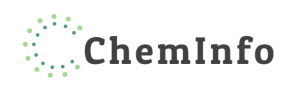The consumption landscape is evolving, with the preference for low-alcohol and alcohol-free beverages gaining traction among different age groups—baijiu for the ’70s, red wine for the ’80s, and now, non-alcoholic drinks for the ’90s.

I. Flourishing Market
A heightened awareness of health-conscious consumption has empowered today’s consumers with a clear inclination to purchase health-oriented products. This surge is propelling a global demand for non-alcoholic beverages.
The latest data from the International Wine and Spirits Research (IWSR) reveals that in 2020, non-alcoholic beverages captured a 3% share of the entire alcoholic beverage market. Projections for 2024 indicate a 34% growth in global sales of low-alcohol and alcohol-free beverages, according to the “2021 Strategic Research on Non/Low-Alcoholic Drinks” released by IWSR.
Diverse categories within the flourishing non-alcoholic beverage market have attracted significant attention. Brands like Nongfu Spring, Heineken, Coca-Cola, and Snow Beer have launched their own non-alcoholic drinks. An ambitious goal set by AB InBev aims to achieve 20% of global sales through low-alcohol and alcohol-free beverages by 2025.
II. Abundant Variety
In the non-alcoholic market, beyond familiar non-alcoholic beers, even new entries in the spirits category are witnessing a decline in alcohol content. In fact, non-alcoholic spirits have emerged as a new category in the past couple of years, mirroring the trend of reduced alcohol content in many new liquor releases. This trend extends to non-alcoholic wines as well.
According to the latest data from market research company Fact.MR, the annual compound growth rate for global non-alcoholic beer and non-alcoholic wine is expected to be 7% from 2019 to 2027. By 2027, the global market value of non-alcoholic wine is projected to surpass $10 billion. In the realm of non-alcoholic spirits, the U.S. is expected to witness a 31.4% growth in 2021.
III. Advantages
Compared to traditional alcoholic beverages, the advantages of non-alcoholic beverages are evident.
Firstly, they offer lower calorie and alcohol content. Products with low calories and reduced alcohol levels align with consumers’ health-conscious lifestyles, catering to the pursuits of health, fitness, and body maintenance, particularly among the younger demographic.
Secondly, they cater to individual preferences. For those who prefer alcohol-free options, and for some young individuals facing the dilemma of alcohol intolerance but still wanting to explore, non-alcoholic beverages become the most suitable choice.
Thirdly, they are cost-effective. Low and non-alcoholic beverages are more affordable compared to traditional beers, spirits, and wines.
Lastly, they meet socializing needs. With an increase in social interactions among young people, there is a demand for beverages that allow for socializing without the desire to get intoxicated. Non-alcoholic beverages emerge as a fail-safe choice in such social scenarios.



